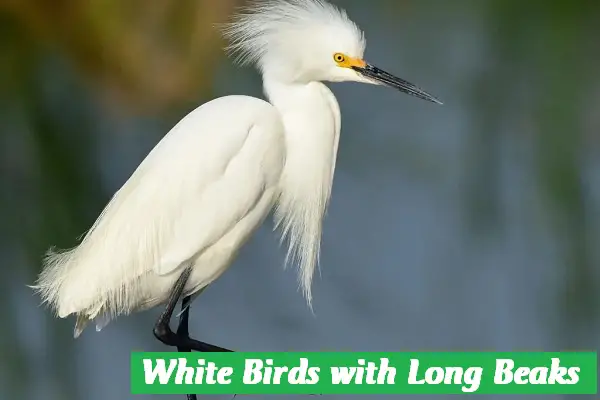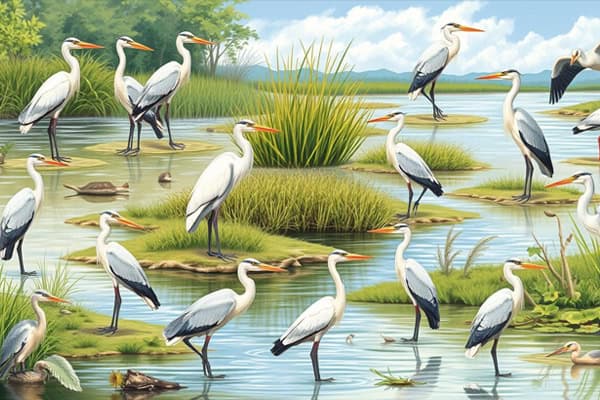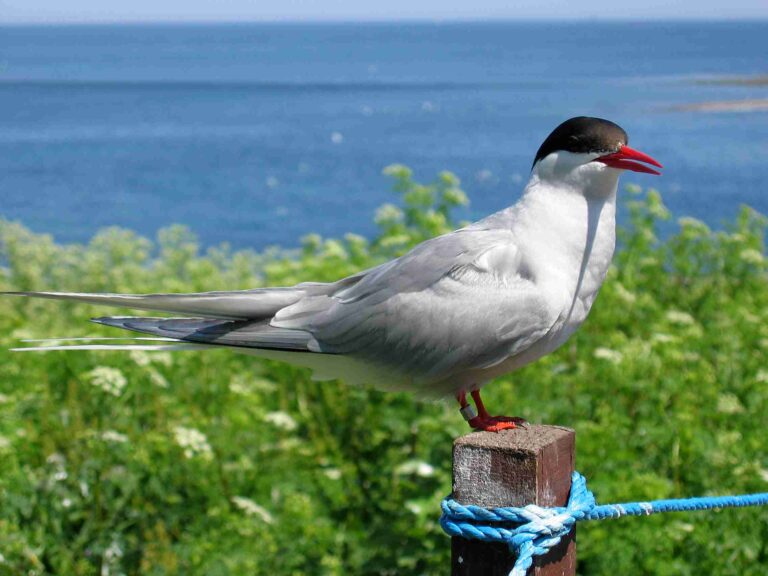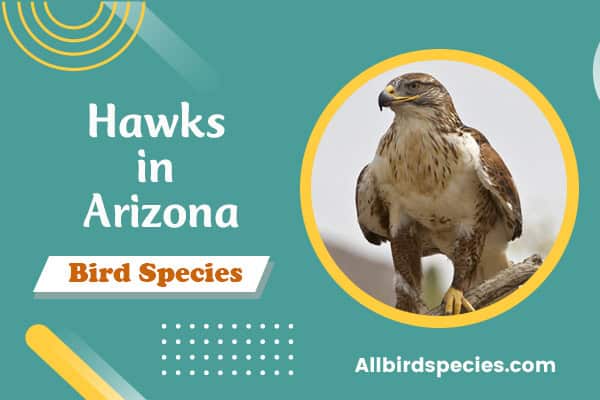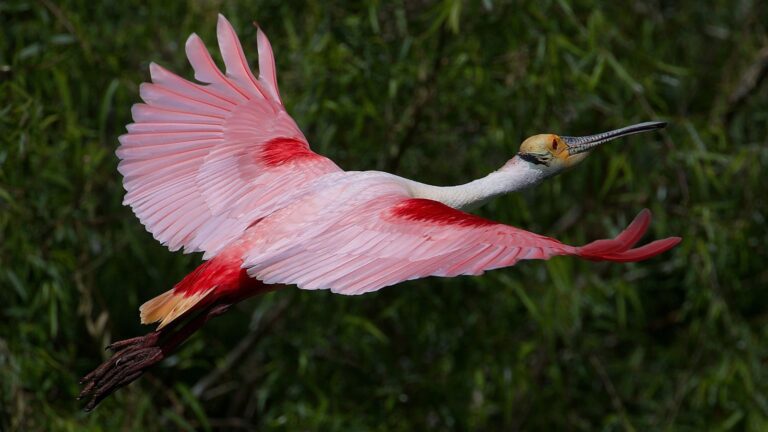Top 8 White Birds with Long Beaks (Incl. Photos)
In the world of birds, some stand out for their unique looks and behaviors. These are the white birds with long beaks. They live in North America and its coastal areas. They are a sight to see, showing us nature’s amazing adaptations.
But what makes these birds special? How do their long beaks help them live? Let’s explore the secrets of these amazing creatures.
These birds live in many places, from wetlands to the ocean. You’ll find the Great Egret, the Snowy Egret, the American White Ibis, and the Masked Booby among them. Each bird has its way of living, thanks to its special beak.
Their beaks are key for finding food, catching prey, and moving through their world. Let’s dive into the world of these fascinating birds and learn more about their unique beaks.
White Birds with Long Beaks in North America
In North America, especially in Florida’s wetlands and coastal areas, white birds with long beaks are a sight to behold. These birds have special features that help them live well in their homes. They are a group of wading birds that catch the eye with their unique looks.
The Great Egret, Snowy Egret, and American White Pelican are common in Florida. The Snowy Egret is known for its black beak and yellow feet. The American White Pelican is huge and has a pink beak.
These birds are great hunters in wetlands and coastal areas. Their long beaks let them find fish, amphibians, and small bugs in the mud and sand. They hunt in marshes, estuaries, and by the shore, using smart techniques like the Snowy Egret’s foot-stirring method.
| Bird Species | Beak Color | Foot Color | Wingspan (inches) | Lifespan (years) |
|---|---|---|---|---|
| Great Egret | Yellow | Black | 67 | 5 |
| Snowy Egret | Black | Yellow | 39.4 | 16 |
| American White Pelican | Pink | Pink | 120 | 25 |
Florida is a great place for birdwatching these white birds with long beaks. Places like Everglades National Park, Merritt Island National Wildlife Refuge, and Lake Okeechobee are good spots. To see these birds, go birdwatching early in the morning, be quiet, and stay near the water.
It’s important to protect these birds’ homes because they need healthy wetlands and coastal areas to live. By working to save these places, we can make sure these amazing birds will be around for a long time.
1. Snowy Egret
The Snowy Egret (Egretta thula) is a stunning wading bird with pure white feathers. It’s a common sight in wetlands and coastal areas across the U.S. It has a long, black beak, yellow eyes, and bright yellow feet. This makes it a beautiful sight to see.
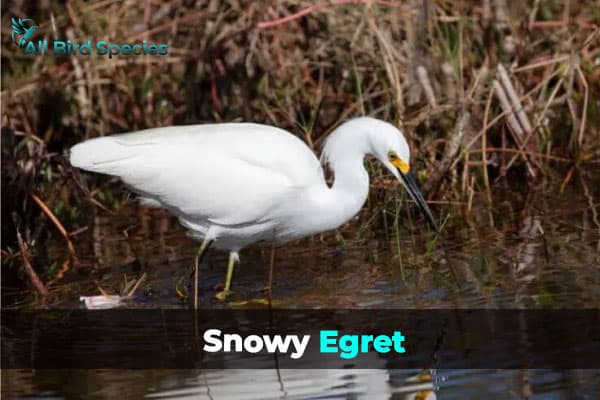
Elegant Plumes and Captivating Hunting Techniques
In the breeding season, the Snowy Egret shows off stunning plumes on its head, neck, and back. These birds hunt with their long necks and sharp bills. They catch fish, frogs, and insects in shallow waters with grace.
Once, many Snowy Egrets were hunted for their feathers. Conservation efforts helped them recover. Now, they’re found in many wetlands and coasts, especially in Texas, like the Smith Oaks Sanctuary on High Island.
Today, the Snowy Egret still amazes bird lovers with its beauty and hunting skills. It’s important to these wetland ecosystems. These birds help keep their environments balanced.
| Characteristic | Description |
|---|---|
| Appearance | All-white plumage, long black beak, yellow eyes, black legs with yellow feet, breeding plumes on head, neck, chest, and back |
| Size | Smaller than a Great Blue Heron but larger than a Snowy Egret |
| Habitat | Wetlands, coastal areas, shallow waters, marshes, estuaries, and more |
| Diet | Fish, frogs, crustaceans, insects, and other small aquatic animals |
| Hunting Behavior | Wading in shallow water, using long neck and sharp beak to catch prey |
The Snowy Egret is a natural wonder, captivating everyone with its grace and beauty. We must protect its home in wetlands.
2. American White Pelican
The American white pelican (Pelecanus erythrorhynchos) is a large seabird that lives in North America’s coastal habitats. It has black-and-white feathers, a big orange beak, and a wide wingspan. This migratory bird is a sight to see. It lives in wetlands, shallow lakes, and fishing areas, showing off its beauty and size.
There are fewer than 60 colonies of American white pelicans. This makes them special. These giants feed their chick about 150 pounds of food from birth to when it can find its own food. They are also known to steal food from other pelicans about one-third of the time, showing how resourceful they are.
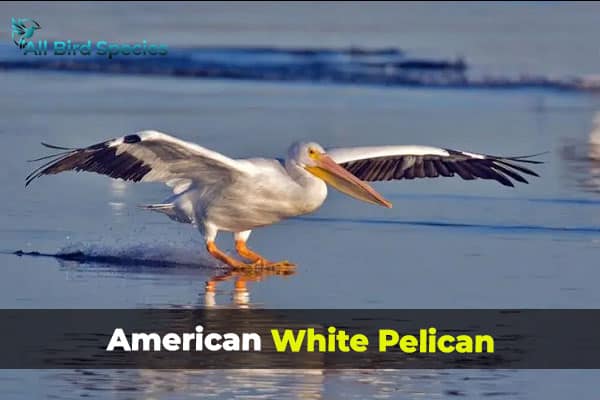
Some interesting facts about the American white pelican include that they can squawk before hatching if it’s too hot or cold. The oldest known pelican lived at least 23 years and 6 months. They are big, with a body length of 130 to 180 cm and a wingspan of 240 to 300 cm. These majestic giants are truly a sight in the sky.
| Characteristic | Measurement |
|---|---|
| Body Length | 130 to 180 cm (51 to 70 inches) |
| Wingspan | 240 to 300 cm (94 to 118 inches) |
| Weight | 4.5 to 9 kg (10 to 19 lbs) |
The American white pelican is a species that amazes birdwatchers and nature lovers. Its size, unique behaviors, and important role in coastal habitats make it special. These majestic giants inspire and delight those lucky enough to see them in the sky.
3. Cattle Egret
The cattle egret, or Bubulcus ibis, is a small, white heron species. It’s known for its close relationship with livestock. Originally from Africa, Asia, and southern Europe, it has spread to North and South America, Australia, and many islands. Now, it’s one of the most common herons in North America.
They stand out with their white feathers and pointed yellow beaks. These white birds with long beaks feed in a unique way. They follow grazing animals like cattle and buffalo, eating insects and small prey disturbed by these animals. This relationship helps them live in many places, like grasslands and wetlands.
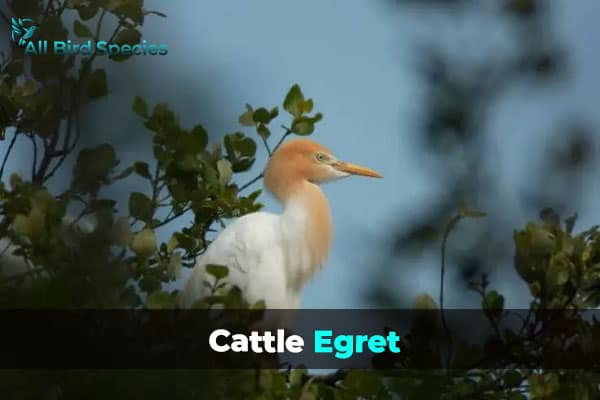
Following Livestock for Insect Prey
Cattle egrets mainly eat insects, such as spiders and grasshoppers. They follow livestock because it helps them find food. This shows how adaptable and opportunistic they are.
In breeding season, they look different with a salmon color on their heads and long, golden plumes. These changes help them in finding a mate and breeding. They breed all year in the tropics and in spring and summer in North America.
| Metric | Cattle Egret | American White Pelican | Great Egret |
|---|---|---|---|
| Length | 88-96 cm | 50-70 inches | 80-104 cm |
| Wingspan | 88-96 cm | 95-120 inches | 131-170 cm |
| Weight | 270-512 g | Over 4 lbs daily | 700-1,500 g |
| Lifespan | At least 17 years | Over 16 years (34 years in captivity) | Unknown |
There are between 4 million and 9.85 million cattle egrets worldwide. Their numbers are growing because they can live in many places. They are an important part of many ecosystems, thanks to their relationship with grazers.
4. American White Ibis
The American White Ibis, known as Eudocimus albus, is a stunning wading bird. It’s a key bird in Florida’s coastal and wetland areas. It stands out with its long, dark beak and pinkish-red legs. This bird is one of the few white birds with long beaks in Florida.
This bird lives in the southeastern U.S., Mexico, Central America, and northern South America. Most live there all year, but some move south for winter. They’re easy to spot in Florida with their white feathers, black wing tips, and blue eyes.
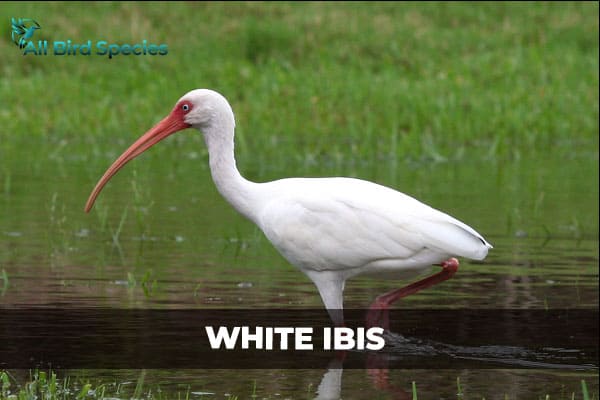
These white birds with long beaks eat a wide variety of food like insects, crustaceans, fish, frogs, lizards, and worms. Their long beaks help them search for food in deep mud and water. They play a big role in Florida’s wetland ecosystems.
However, their numbers in Florida have been dropping over the years. This has raised concerns about their future. Scientists are studying how climate change will affect their homes, showing why we need to protect their habitats.
| Statistic | Value |
|---|---|
| Record number of White Ibis nests in the Everglades (2018) | 95,000 |
| Decline in Australian Ibis populations in interior wetlands over the past 40 years | Significant decline due to factors like drought and habitat degradation |
| Increase in Australian Ibis populations in urban areas | Ibis are now among the Top 10 most common birds spotted in BirdLife Australia’s Backyard Bird Count |
| Adaptation of White Ibis in Florida to suburban habitats | Ibis are foraging on irrigated lawns, golf courses, and local parks, leading to longer breeding periods |
The American White Ibis is a cherished bird in Florida, loved by locals and visitors. We must work to protect it as we face challenges like habitat loss and climate change. Let’s keep this amazing bird a symbol of Florida’s rich natural heritage.
5. Little Blue Heron
The little blue heron (egretta caerulea) changes a lot as it grows from a young bird to an adult. At first, it has a beautiful white plumage that looks a lot like a snowy egret. But as it gets older, it turns into a blue-gray adult with a deep reddish-purple head and neck.
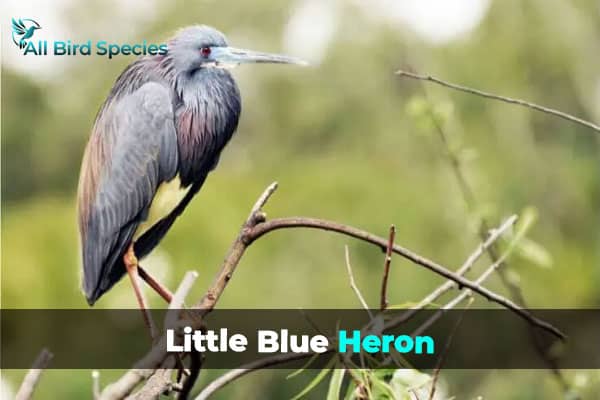
These herons live mainly in the southeastern United States, Mexico, Central America, and South America. They like living in wetlands, marshes, and other places near water. Some move to other places for the winter, but the ones near the coast stay where they are all year.
From White Juvenile to Striking Adult Plumage
When they are first born, little blue heron chicks are covered in soft, white down. As they grow, they change color. They get a white plumage with dusky wingtips. This makes them look a lot like the snowy egret.
But when they become adults, they change again. They turn into a dark blue-gray bird with a deep reddish-purple head and neck. Their bill also changes, becoming pale blue at the base and black at the tip. The adult little blue heron looks very different from when it was young.
The change from white plumage to blue-gray and purple is amazing. It shows how adaptable and beautiful nature can be.
6. Great Egret
The great egret, known as Ardea alba, is a stunning bird in the heron family. It stands tall, with a long beak, in wetlands and marshes across many continents. Its beauty and hunting skills make it a symbol of these ecosystems.
This bird can grow up to 3.3 feet tall and has a wingspan of about 4.3 feet. In the breeding season, it changes into a stunning sight with long plumes and a black beak. In the Americas, its beak stays yellow. The facial skin turns green during breeding, adding to its majestic look.

The great egret lives in various wetlands, marshes, and estuaries. It’s found in places with water, like flooded fields and streams. It waits patiently in shallow water to catch fish and other small creatures.
Thanks to conservation, the great egret has bounced back from being hunted for hats. Now, it’s listed as Least Concern by the IUCN. It’s widespread, showing nature’s strength.
Look for the great egret in the wetlands of Florida, marshes of the Chesapeake Bay, or estuaries of the Pacific Northwest. This tall white bird with a long beak is a symbol of conservation success and nature’s resilience.
7. Reddish Egret
The Reddish Egret (Egretta rufescens) is a beautiful bird found in the southern United States, Mexico, Central America, and northern South America. Most of these birds have a dark look. But, in Florida and the Gulf Coast, a few are white in their adult white morph.
The Uncommon White Morph of a Coastal Hunter
The white morph Reddish Egret is stunning, with a white body, grayish legs, pale yellow eyes, and a special beak. They live in coastal areas like mudflats, salt pans, and lagoons. They eat small fish, crabs, shrimp, insects, and frogs.
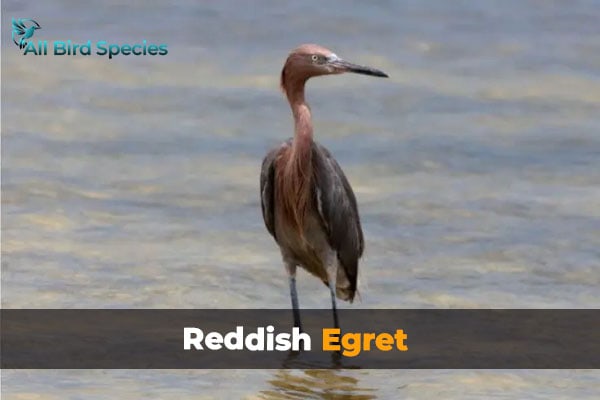
Young Reddish Egrets are grayish with a dark bill. Medium-sized young ones are white with a dark bill too. Adult dark morphs have a grayish-blue body with a pinkish-cinnamon head and neck.
Seeing a rare white morph Reddish Egret is special for bird lovers and photographers. These migratory birds are bigger than Snowy Egrets but smaller than Great Egrets. They are interesting to watch because of their unique hunting ways.
The Reddish Egret’s hunting dance is both beautiful and funny. They use their wings to create a canopy over the water while hunting. This makes them fun to watch.
Reddish Egrets are not common, and the white morph is very rare. There are only 1,500 to 2,000 in the United States, with about 10% being white. Seeing this amazing bird in white is a real treat.
8. Masked Booby
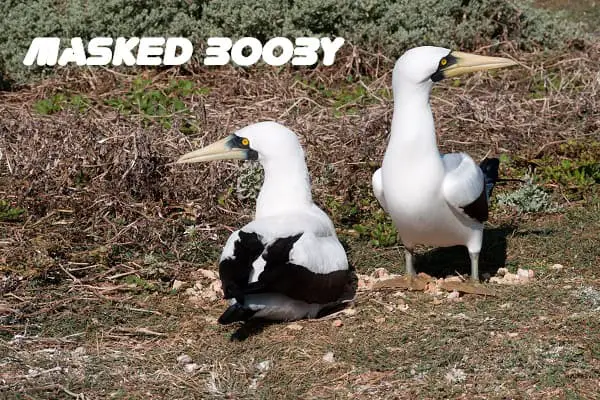
The Masked Booby (Sula dactylatra) is a stunning seabird found in tropical oceans worldwide. It lives in the Indian, Pacific, and Atlantic Oceans. Its black mask and white feathers make it stand out. It’s the biggest booby, reaching 75-85 cm long.
These birds are built for the sea. They have strong wings and sleek bodies for easy flying over the waves. They eat flying fish and squid, diving from 100 meters high to catch their prey. This shows how skilled they are at hunting.
Although the Masked Booby is not considered endangered, its numbers are dropping. Conservation efforts are in place to protect this amazing bird and its home. If you’re exploring the oceans, look for the Masked Booby. It’s a true king of the skies and seas.

